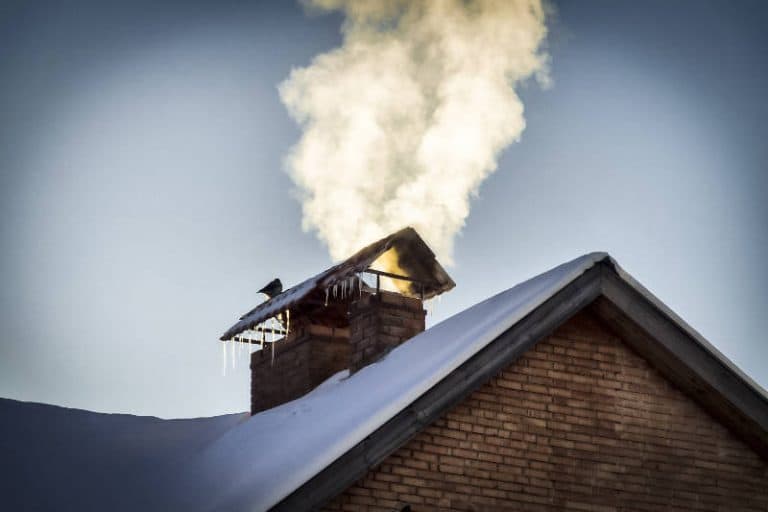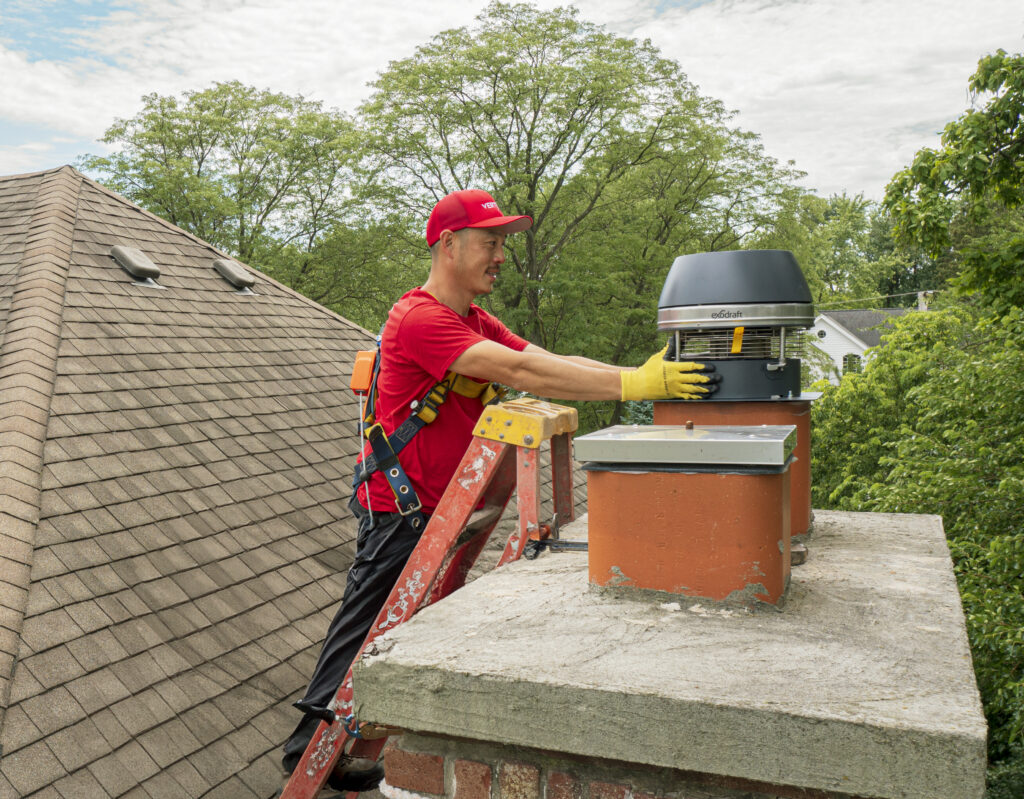
The warm, comfy feel that a fireplace provides can make any winter more tolerable. There are many components that go into a chimney working effectively. The chimney updraft is what allows for your chimney to efficiently pull the smoke up from the house and expel it into the outside air, creating that familiar smoke stack look. However, without a proper updraft, you could be expelling noxious fumes into the home or causing damage to your chimney.
What Exactly Is the Updraft?
The updraft can be defined as negative pressure. Since hot air is less dense than cold air, it flows to areas of less pressure, which is why hot air rises. Just like when someone drinks from a straw, the liquid flows upward when negative pressure occurs, much like if you were to suck on the straw.
If you apply positive pressure, the liquid does not come up the straw; it instead pushes the liquid out and creates bubbles. Similarly, the air from above the chimney acts as if it's sucking the smoke upward.
The updraft is important for numerous reasons. First, while a faint smell of a fire can be pleasant for some, nobody wants to be overwhelmed by the smell of smoke. The updraft in an open fireplace allows for a large amount of pull; hundreds of cubic feet of air are pulled through the chimney and pushed out into the cold air, allowing for a hot fire to burn without people inside the home being overcome by fumes.
How do you know if you have a problem with your chimney? You may have an updraft problem if you experience an overwhelming smell of smoke or fumes that make you feel sick, even when the chimney is not in use. Also, if you feel air being pushed the wrong way (through the chimney back into your home), you may have downdraft issues or some other problem that needs to be fixed.
The key to catching problems early on is to get a chimney inspection. This is the best way to stop problems from getting worse and damaging your chimney without you even knowing about it.
What Causes Updraft Issues?
Mother Nature tries to equalize pressure at all times. In other words, it's nature’s way to try to replace the same amount of air that escapes with an equal amount of air coming in.
If the chimney is one of the easiest ways for air to enter in, then you may feel a downdraft that brings a strong smell of smoke along with it. The downdraft is when pressure results in the pull of air down from the chimney into the house.
The stack effect means that in lower areas of your house, you'll probably have cooler air and lower pressure. This is due to hot air’s tendency to rise. If a fireplace is in one of these lower areas, a downdraft may be a recurring issue. You may be able to eliminate this problem by opening a window in the same room where the fireplace is located. If you have two fireplaces, this is a particularly common problem.
Another reason for problems with the chimney updraft is that there may be an obstruction in the chimney. The chimney opening may be the site of the obstruction if this is the case. A branch may be hanging over that's blocking part of the chimney, which would impact the pressure.
If a building next to the location of the fireplace is too close, as is the case in more urban areas where little room exists between buildings, that can also result in an obstruction. Another possibility is that there's a creosote build-up, which can lead to dangerous situations if not checked on and taken care of by a professional.
What's Creosote?
One problem with having a downdraft issue is the smell of creosote invading your house. Creosote is a problem that all users of fireplaces will deal with at some point.
When wood is burned, there's a mixture of gas, smoke, vapor, minerals and various other particles that circulate in the chimney. When this mixture of elements is expelled, condensation forms on the walls of the chimney liner.
At first, creosote looks like ashy soot and is easy to remove. A trained professional will know how to take care of removing creosote at this stage. At the second stage, creosote looks like black flakes and becomes harder to remove.
When it gets to the third stage, creosote is thick and looks like tar in the flue. At this point, it's very difficult to remove. In some of these cases, a new chimney liner is needed.
Stage three creosote can result from a house being too airtight or unseasoned firewood being used. In severe cases, a chimney fire can result or carbon monoxide can be pushed out into the home.
To help with this, try to close the chimney damper whenever you are not using the fireplace. You’ll want to be careful still since many dampers are very leaky.

How to Increase the Updraft
Hot air is lighter and has more pull, so burning a hotter fire will help to pull the air out of the chimney. In order to make a fire burn hotter, you need more oxygen. Be sure to use lots of small pieces of wood so that the larger pieces can burn easily.
You also want to make sure the firewood is completely dry. Moisture on it will lead to creosote build-up and won't allow for the fire to get very hot.
Freshly cut firewood tends to have more moisture, so make sure to allow it to sit for ample time. Stacking wood in the back of your house or keeping it in a dry place for at least a year will make for very dry wood that is perfect for hot fires.
Another way to provide for hotter fires and thus better updraft is to have a taller chimney. The increased volume of the stack will allow for greater pull. Raising the height of the chimney is also an option if the opening is obstructed due to natural reasons, such as overgrown trees, or if adjacent buildings are causing downdraft problems.
Finally, if you live in an area with a lot of wind, you may need to install some sort of chimney cap that is wind resistant. This will help with problems you have starting a fire or if you are noticing a downdraft occurring as a result of the wind.
Chimney Updraft is Important
A fireplace is a valuable addition to a home. Fireplaces serve a decorative and practical purpose, adding visual appeal and creating a cozy ambiance on a cold night. However, it’s important to understand your chimney’s updraft and know what to watch out for in the event of problems. By ensuring you have an optimal chimney updraft, you can keep your family safe and reduce potential costs.
Whenever your chimney or fireplace aren't working properly, call Vertical Chimney Care - we're Chicago's chimney experts. We'll inspect your chimney and make sure everything is working properly. If there are any problems, we'll take care of them so you won't have to worry about them.
Contact us today and see why so many homeowners have trusted Vertical Chimney Care with their fireplace and chimney projects.
